Famous since classical Greek times when it rated a mention in Homer's Odyssey, El Puerto de Santa Maria is a fishing port in the sherry triangle on the Bay of Cadiz, Andalucia, Spain.
By Nick Nutter | Updated 29 Sep 2022 | Cádiz | Villages |
Login to add to YOUR Favourites or Read Later
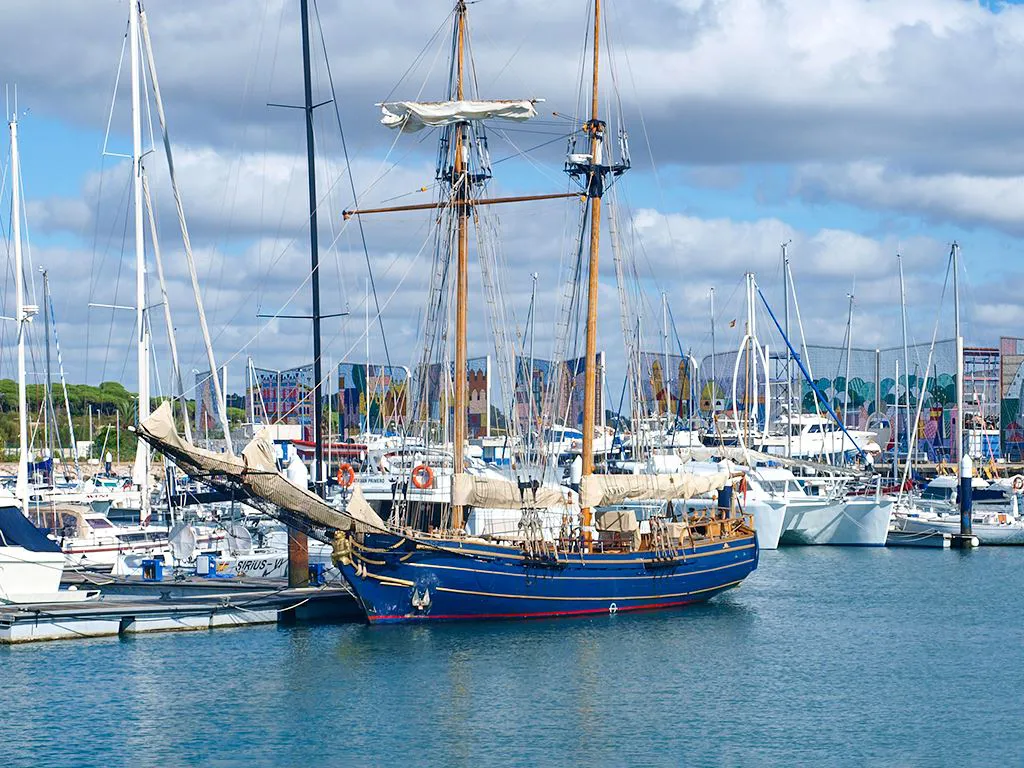
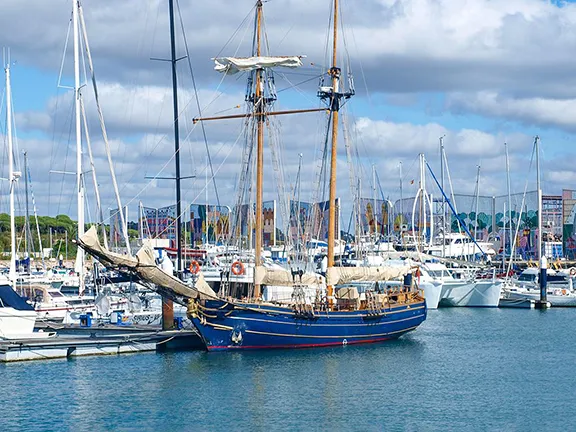
El Puerto de Santa Maria
According to the legend in the Odyssey of Homer: following the Trojan War, Menestheus, a Greek official, escaped with some of his troops through the Gibraltar Strait and reached the Guadalette river. They established a town called Menesthei Port and an oracle. It is recorded that the inhabitants of Gadiz (Cadiz) offered sacrifices at the Oracle of Menestheus. The Moors named the town Alcante (port of salt) due to the enormous areas of salt pans created by the Phoenicians and Romans. It was Alfonso X of Castile, who, having retaken the town for the Christians in 1260, renamed the port Santa Maria del Puerto. Alfonso suffered from swollen legs and was miraculously cured following a visit to his church, the Santa Maria do Porto. He bestowed a royal charter on the town that allows it to use the prefix El, an honour not even granted to Madrid, the capital of Spain. Steeped in history, the Spanish resort of El Puerto de Santa Maria in Cadiz province is a destination not to be missed for many reasons.
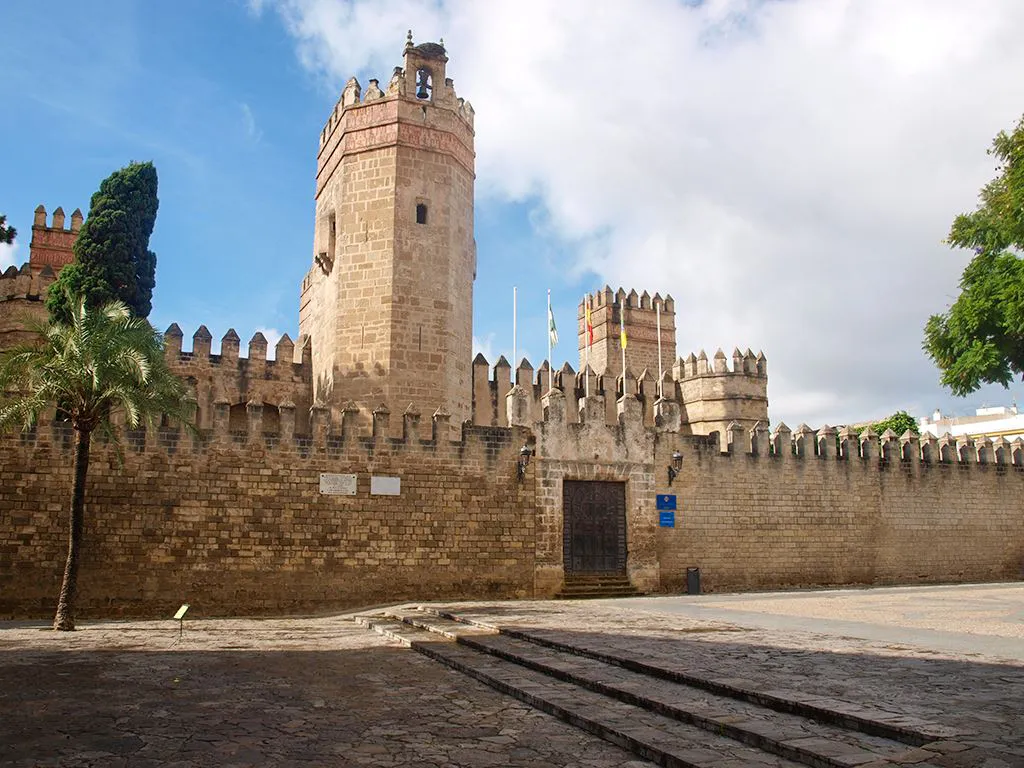
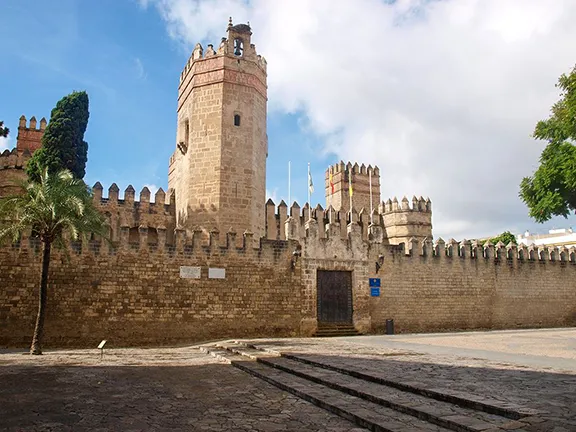
San Marcos Castle El Puerto de Santa Maria
Founded in the 13th Century the San Marcos castle is now the geographical centre of the town. It was built to protect the then small village from pirates and it was here that, in 1492, Christopher Columbus tried unsuccessfully to persuade the resident Duke of Medinaceli to finance his first voyage of discovery across the Atlantic. It was in this castle that the trader, Juan De La Cosa, who supplied Columbus’s three ships, the Santa Maria (the name is a coincidence that has led to much confusion), the Pinta and Niña, drew his world map in 1500 that first showed the American continent. Columbus never liked the Santa Maria and he was relieved to transfer his command to the Nina when the Santa Maria foundered on rocks on the coast of Hispaniola on the first voyage.
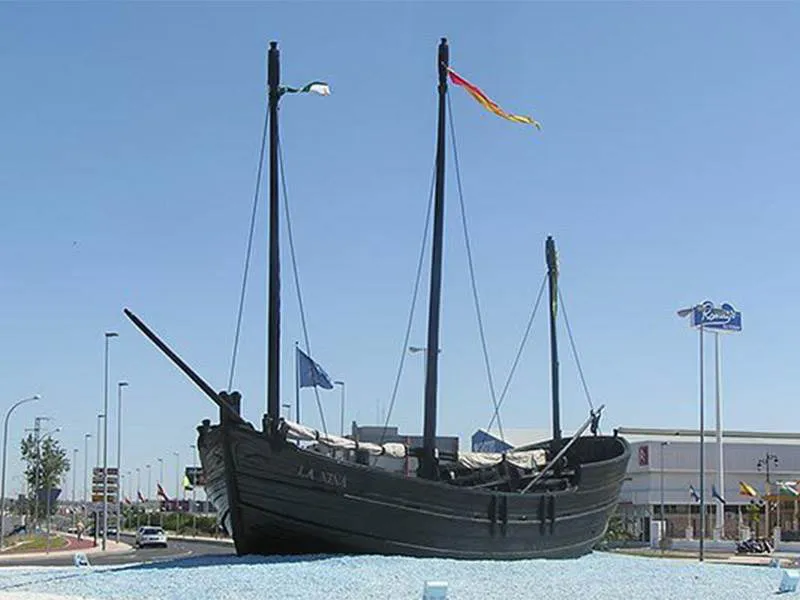
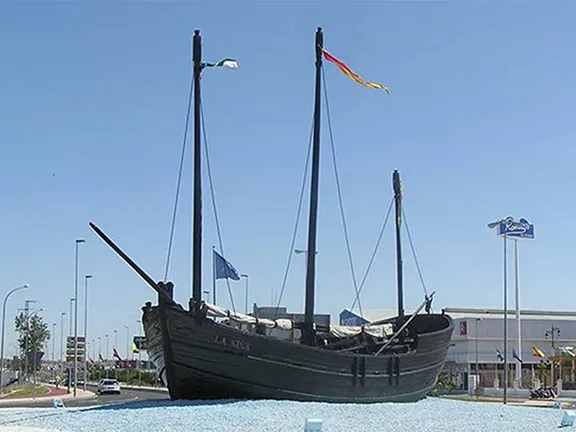
The Nina at El Puerto de Santa Maria
To confuse the visitor to Puerto de Santa Maria even more than its name and the tenuous link to Columbus, a replica of the Niña occupies a prominent position on a roundabout as you enter the town. Columbus actually started his first voyage from Palos, a small port near Huelva, his second and fourth from Cadiz and his third from Sanlucar.
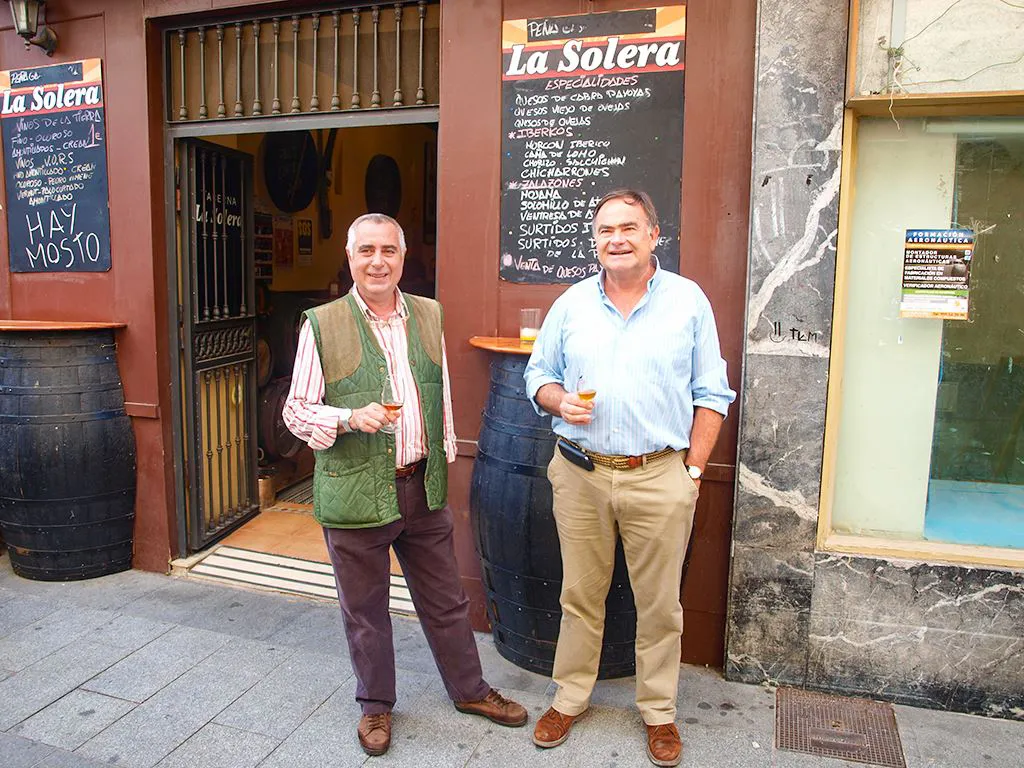
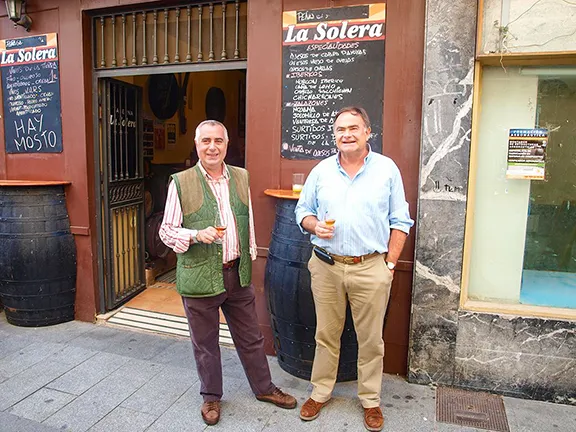
Having set that record straight, we can now look at a product for which this town is justly famous – sherry. Until the rail line from Jerez to Cadiz was built, all the sherry from Jerez was stored in warehouses at Santa Maria before being shipped all over the world. Famous names like Osborne and Terry are written in large letters on the massive bodegas that occupy whole blocks near the port area. Many bodegas offer tours and allow sampling of the product; ask for fino for the driest palest sherry, drunk cold and young, amontillado, slightly aged and darker but still dry, or dark, sweeter, luscious oloroso.
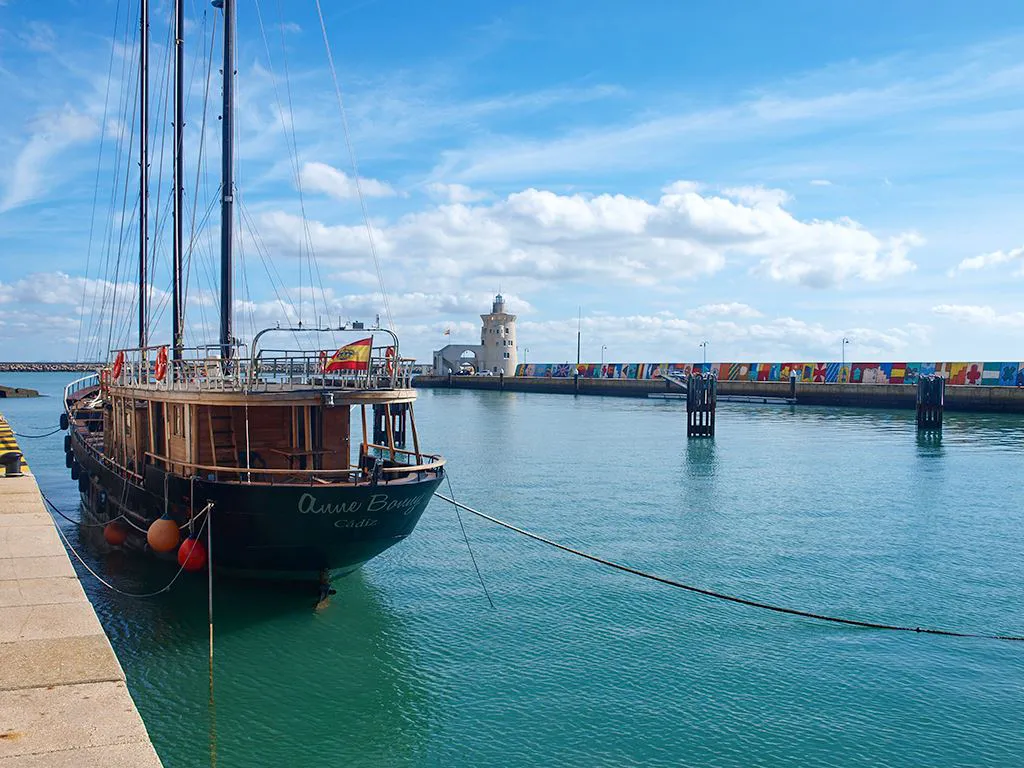
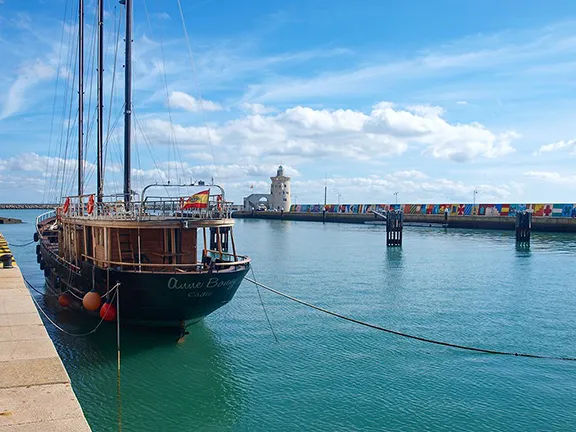
Whilst at the bodega, let us dispel another myth. Manzanilla is similar to fino but can only be produced at Sanlucar de Barrameda where there is a particular salty microclimate that imparts a unique tang to the wine.
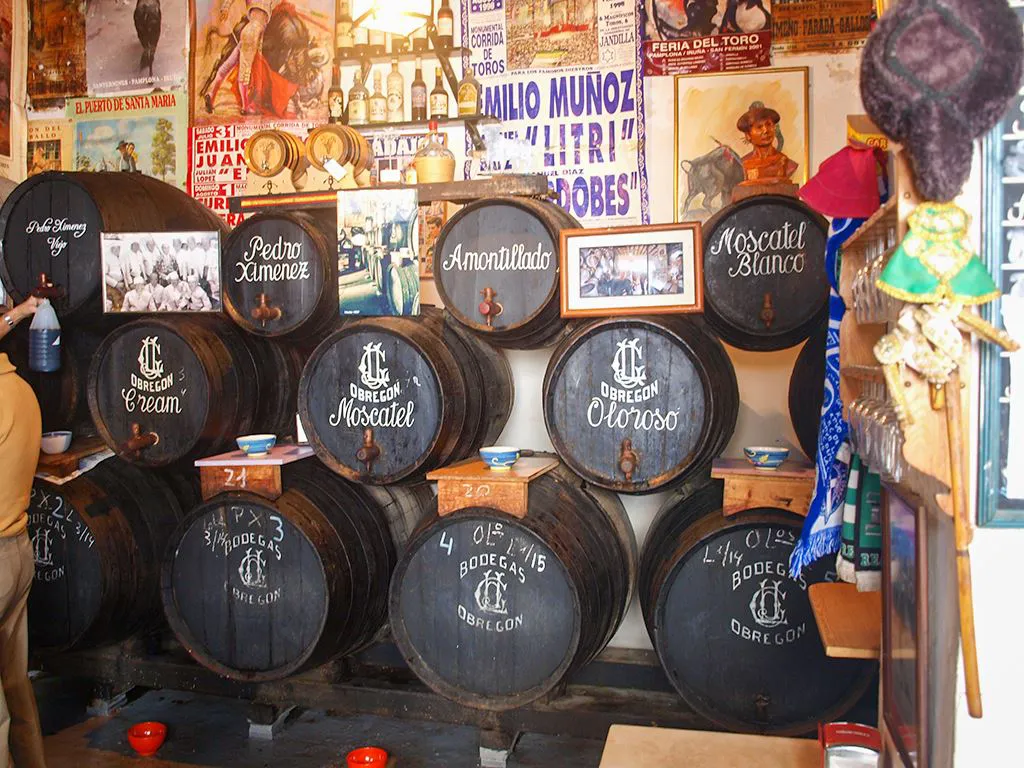
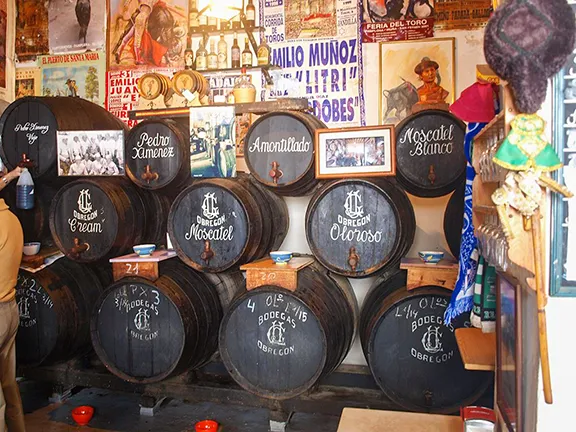
A Tabanco in Puerto de Santa Maria
Jerez de la Frontera, along with El Puerto de Santa Maria and Sanlúcar de Barrameda, are the three points on the 'Sherry Triangle'. In order to be called sherry, the wine has to be produced within this area. So, whilst you are here, why not take a look at the other towns in the triangle?
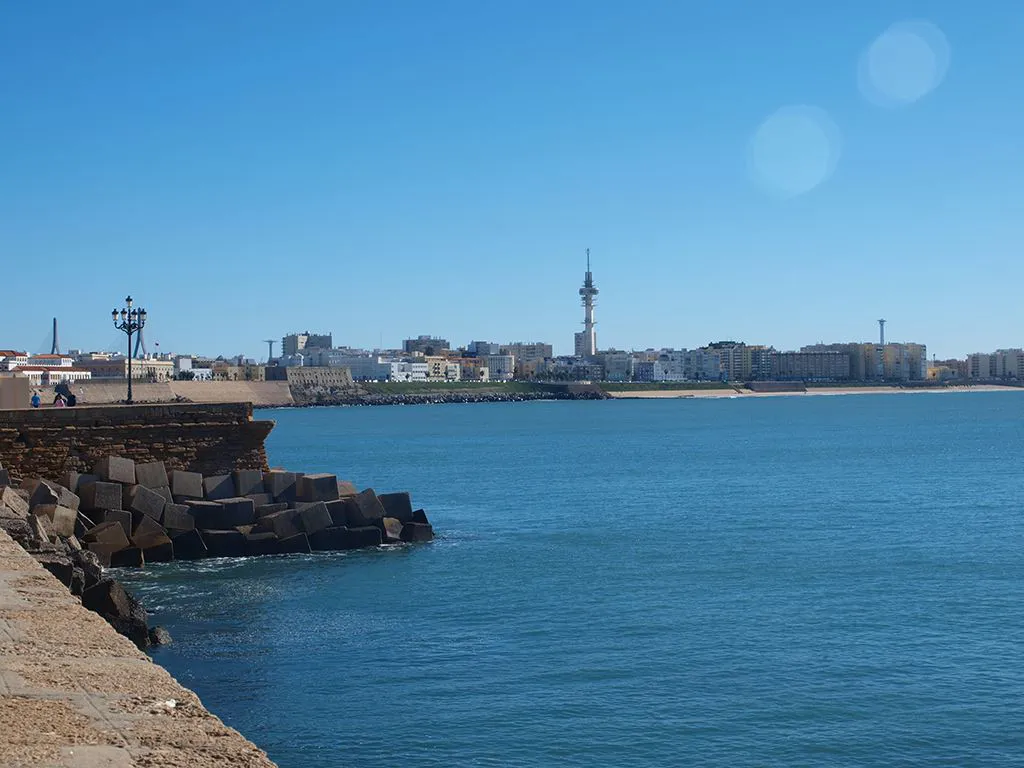
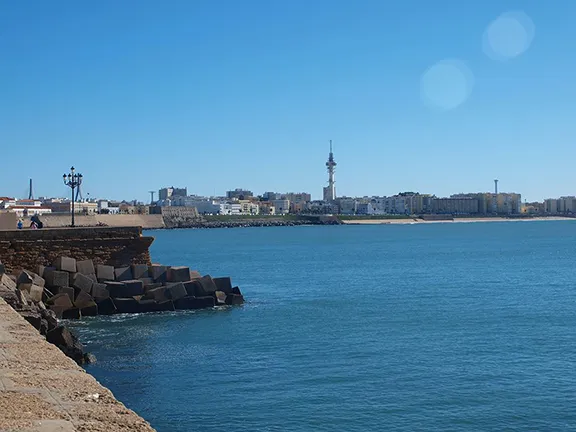
The Bay of Cadiz
Sherry became popular in the UK after the mid 16th Century when Francis Drake sailed off with a few, well 2,900 actually, barrels following the sacking of Cadiz in 1587, an event that became known as the ‘singeing of the King of Spain’s beard’. In fact, for many years the wine was known as ‘sac’ or ‘dry sac’ but this may be yet another Puerto Santa Maria coincidence since the Spanish word for extraction (from the solera) is saca. One bodega, Williams and Humbert, to this day still produce a sherry called Dry Sack. The name Sherry is an Anglicised version of the town name Jerez. Drake became a bit of a hero in Jerez because, once he returned to Britain, the entire country became hooked on the wine he had purloined. It became so fashionable that British entrepreneurs moved to Spain and set up bodegas to ship the wine to Britain. One hundred years later Shakespeare himself did his bit to promote sherry. In Henry IV he had Faustus declare, “If I had a thousand sons, the first humane principle I would teach them should be to forswear thin potations and addict themselves to sack”.
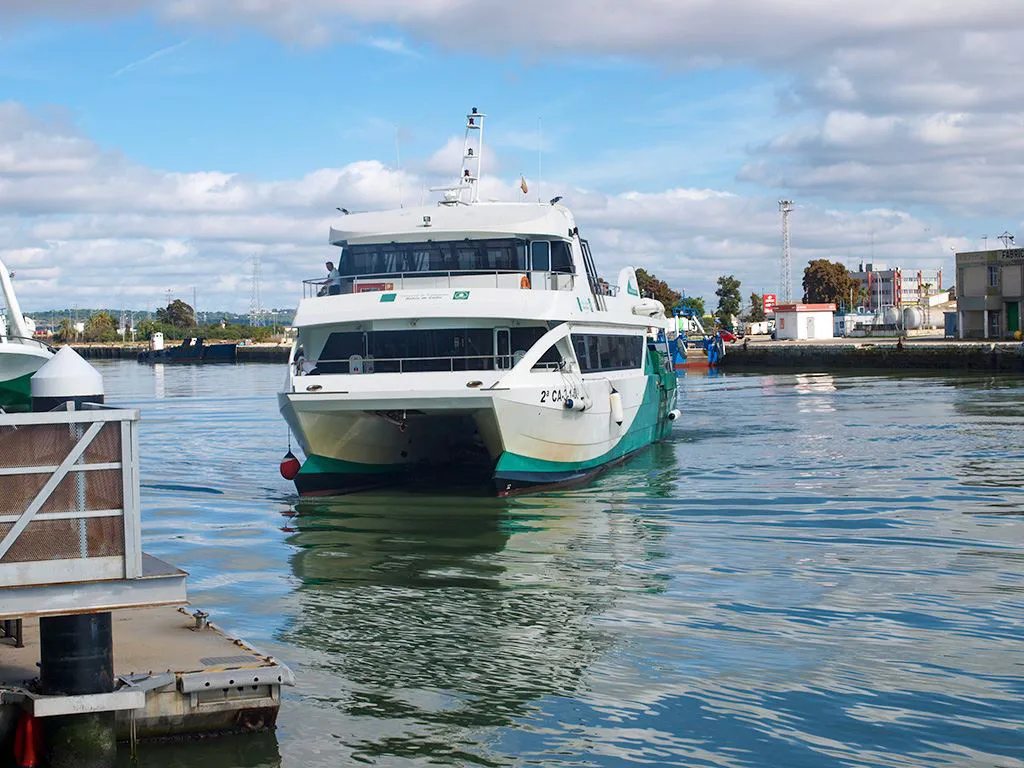
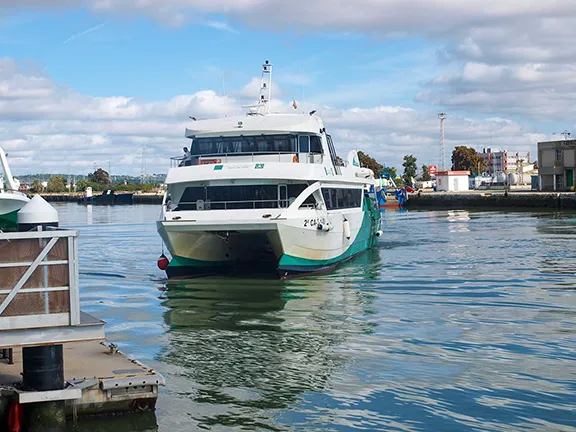
The Cadiz Bay Ferry
Puerto de Santa Maria is linked to Cadiz by a passenger-only ferry that runs every two hours across the sheltered Bay of Cadiz. Its comings and goings from the ferry dock are the scenes of tearful farewells and joyful reunions completely out of proportion to the twenty-minute voyage. Maybe the locals still dread meeting Drake halfway across.
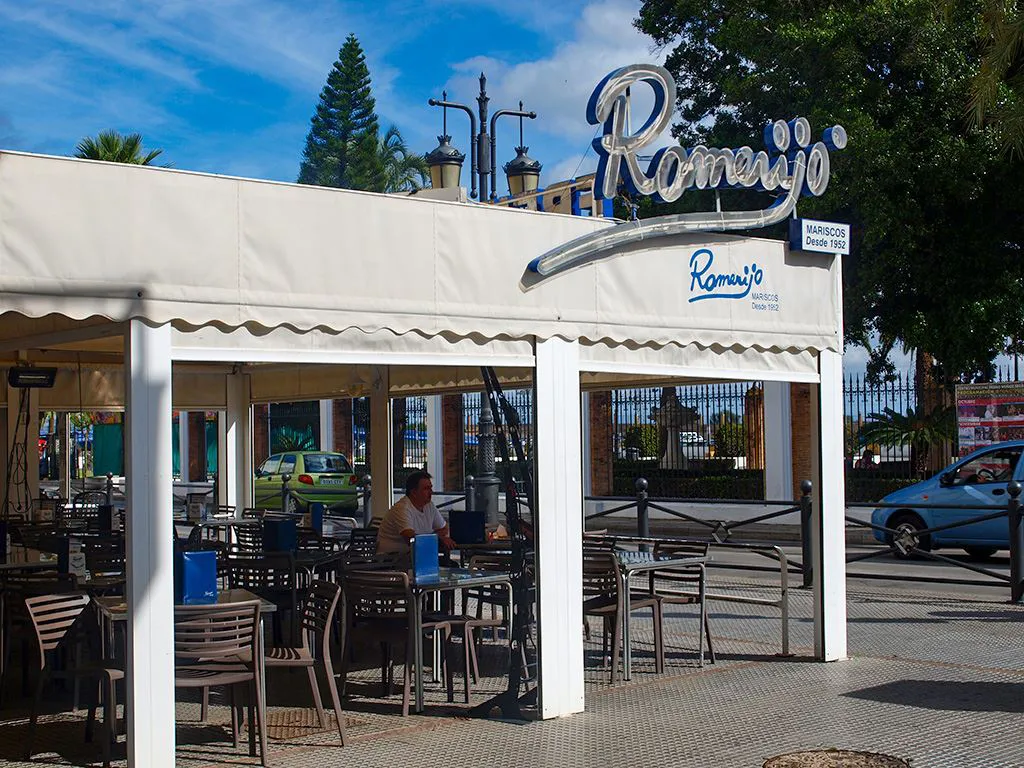
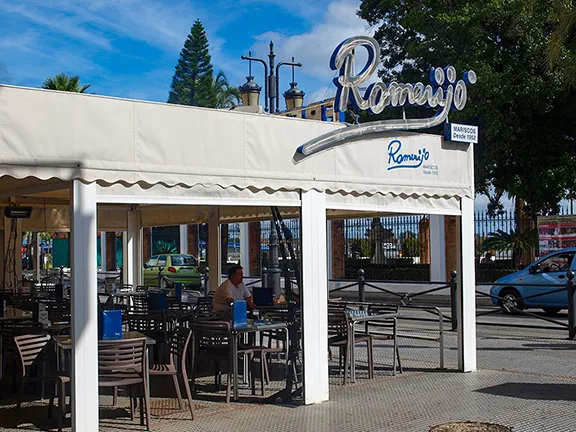
Romerijo's at El Puerto de Santa Maria
Puerto de Santa Maria’s second industry is fishing. The local boats bring in wonderful fresh fish from the Atlantic every day. After sampling the sherry there can be nothing that beats a visit to Romerijo for lunch. This al fresco restaurant on the promenade specialises in shell fish and to obtain best value you have to do as the locals do. First go into the ‘shop’. There you will encounter a huge range of precooked on the premises shellfish, some familiar, some not. Be adventurous, its fun. Everything, from the smallest Cadiz Bay shrimp (an essential ingredient in crispy camerones or shrimp pancakes) to huge Norwegian lobsters is clearly marked for sale by the quarter, half and full kilo. Make your selection and pay. It will be wrapped in a paper cone. Take your fish to a vacant table. Be warned, after 2pm there is little chance of a table immediately. A waiter will offer you a menu so you can chose salads, bread, wine and so on to go with your fish. Fino sherry is an excellent accompaniment. He will also bring your plates, cutlery, skewers for prising the meat out of shells and claw crackers. That’s it, enjoy. Throw waste and shells in the plastic bucket and go back to the ‘shop’ for more but make sure you leave somebody at the table or it will be occupied when you return.
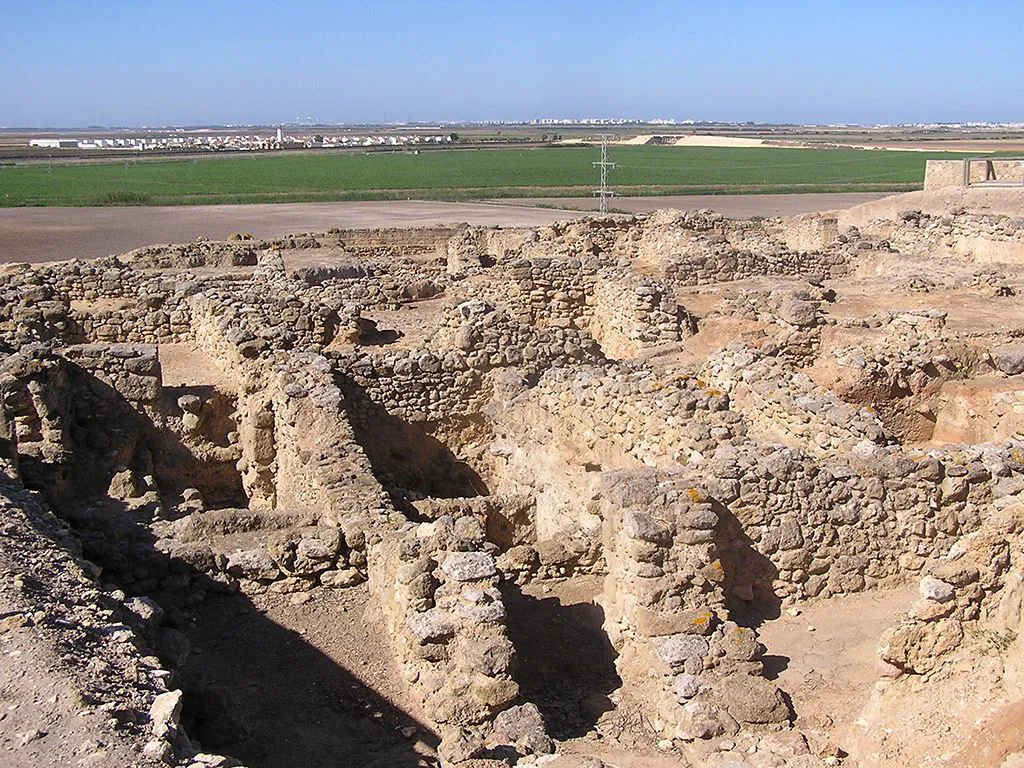
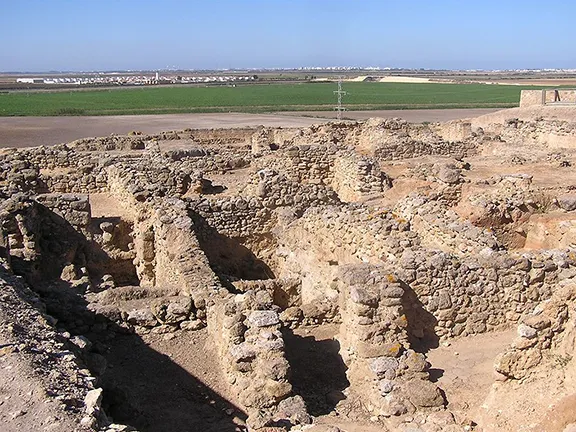
If you can still move after Romerijos, Puerto de Santa Maria has more to offer. About 10 minutes drive out of town is the archaeological site of Doña Blanca. This site dates back to 2000 BC, towards the end of the Copper Age. Later it was occupied by those almost mythical people the Tartessians who were joined by the Phoenicians from about 750 BC and then by the Romans. Artefacts from the site are on display in the Municipal Museum. Opposite the museum is the cathedral, whose spires and turrets are now home to a large number of storks.
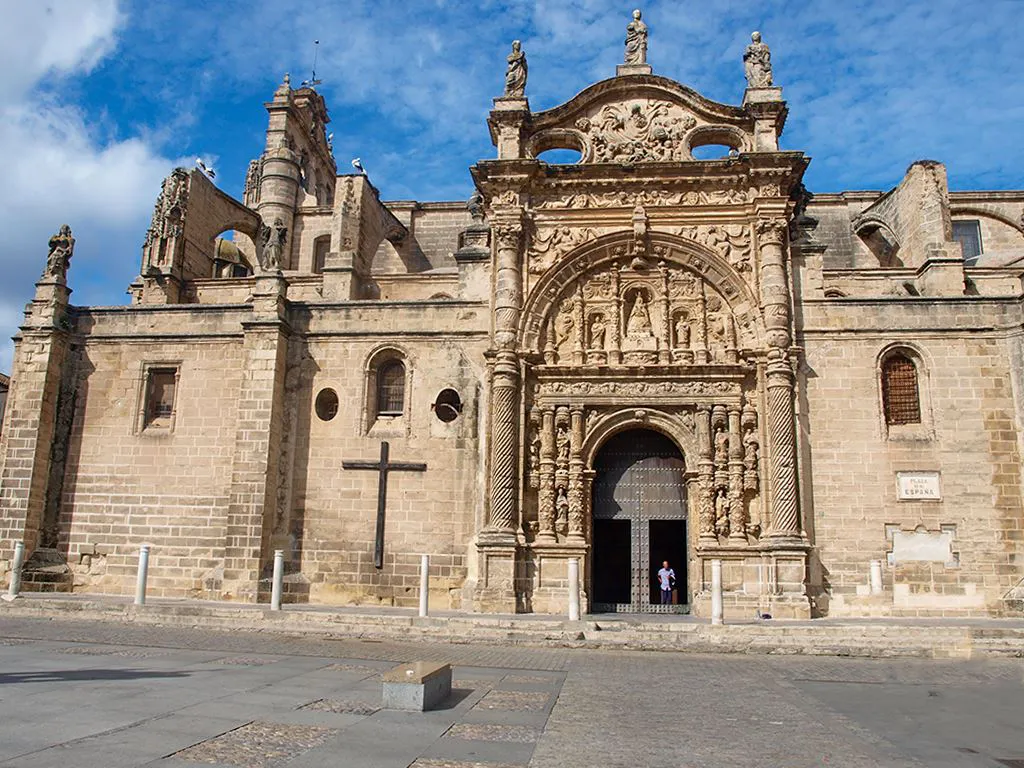

Iglesia Mayor Prioral
Wandering the streets reveals small shops that look as if they have been there since the town was founded and larger places selling fashionable clothing. Not a Mercadona in sight.
You will probably end up in the large square behind all the bodegas. The square is ovelooked by the 15th century Iglesia Mayor Prioral. Damaged in an earthquake during the 17th century, it was rebuilt in this magnificent Baroque style.
There is enough to see and do in Puerto de la Santa Maria to make a lazy long weekend but lots of Spanish families think the same way so accommodation is at a premium. It is advisable to book in advance.
South of the port is the protected area of Cadiz Bay. This large area of marismas is home to thousands of waders including flocks of flamingos. There is limited access to the marismas from Sancti Petri.
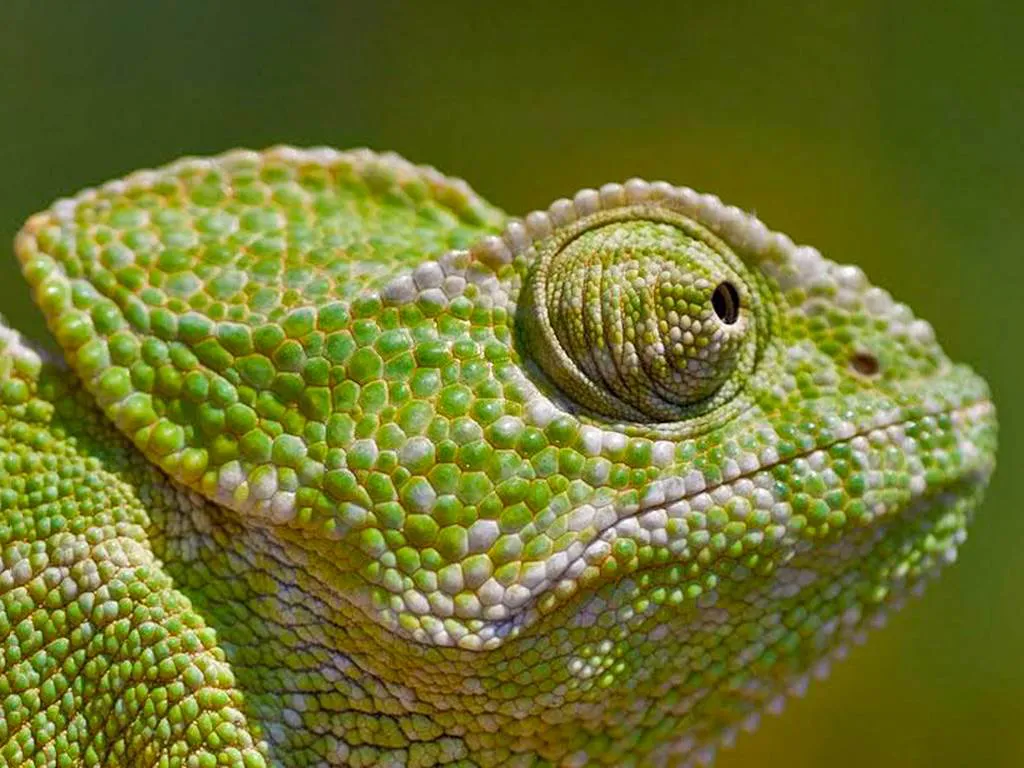
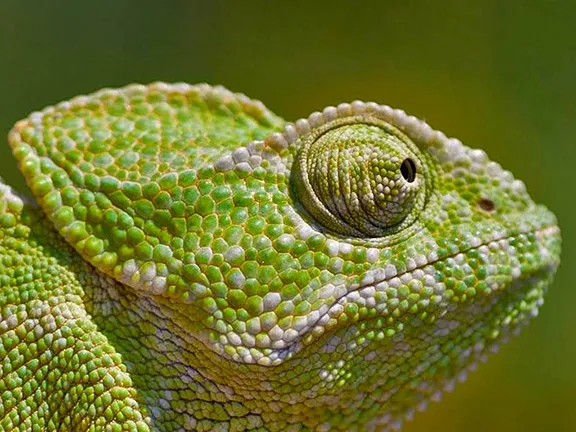
The coast north of the port has fine beaches and the area is protected in aid of that charming lizard, the chameleon. We spotted one at the south end of Playa de Sta. Catalina, languidly making its way into a bamboo plantation. Perhaps he had lunched at Romerijos as well.